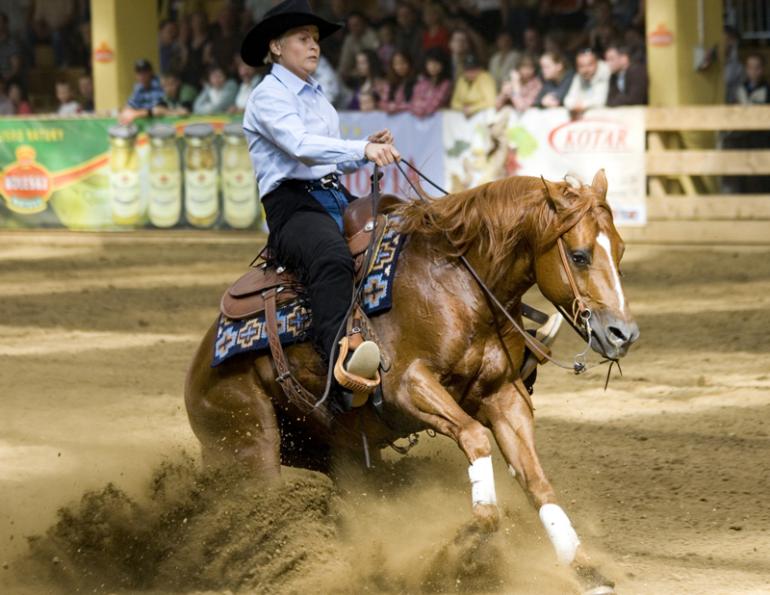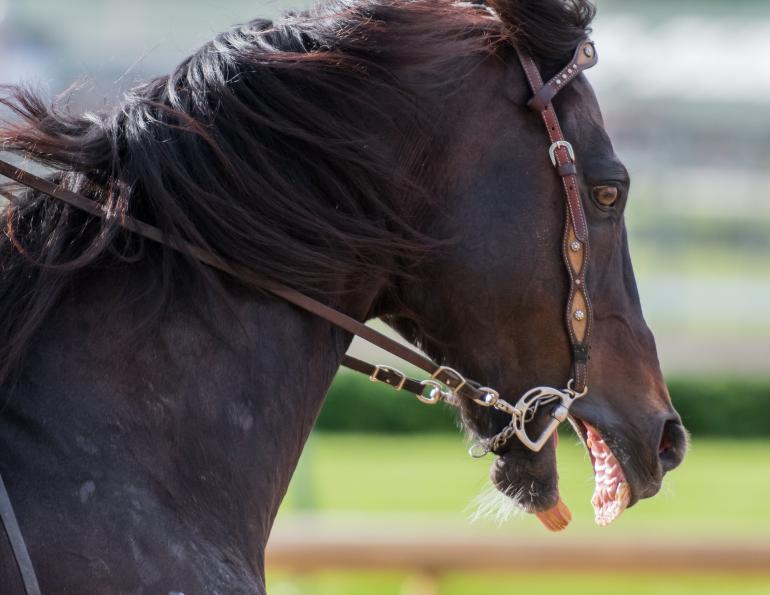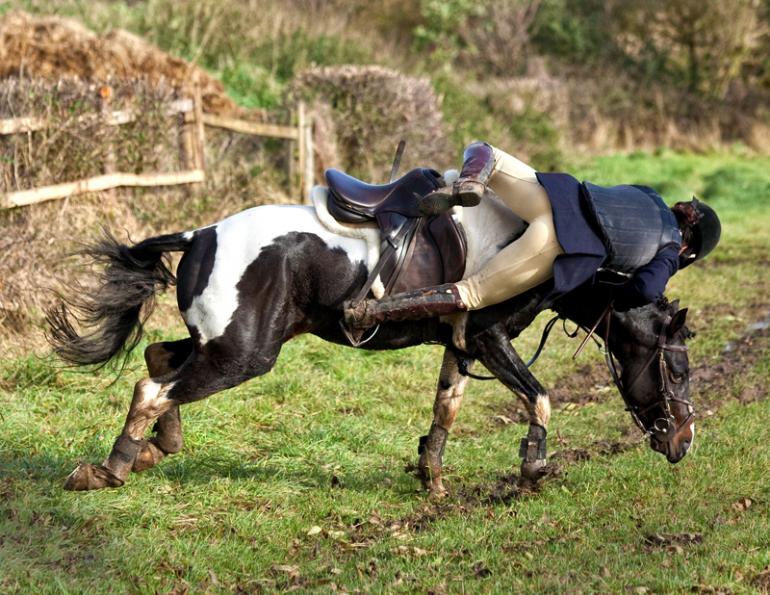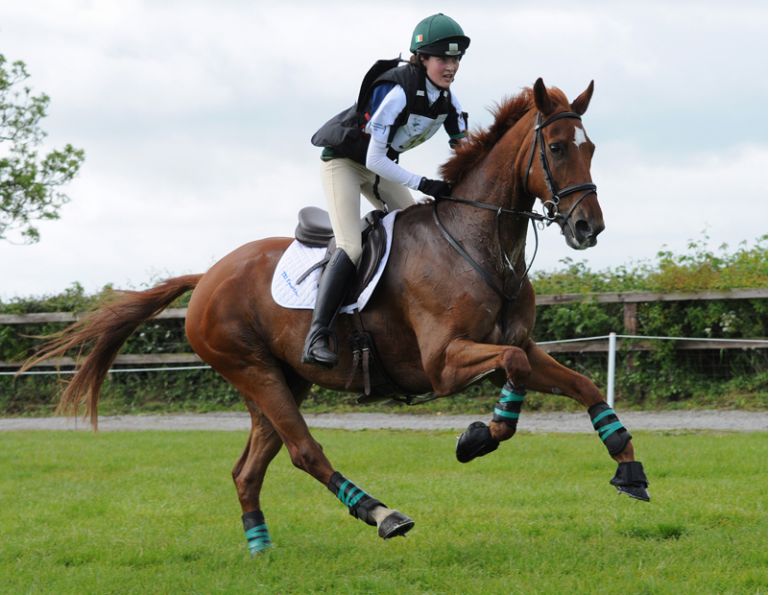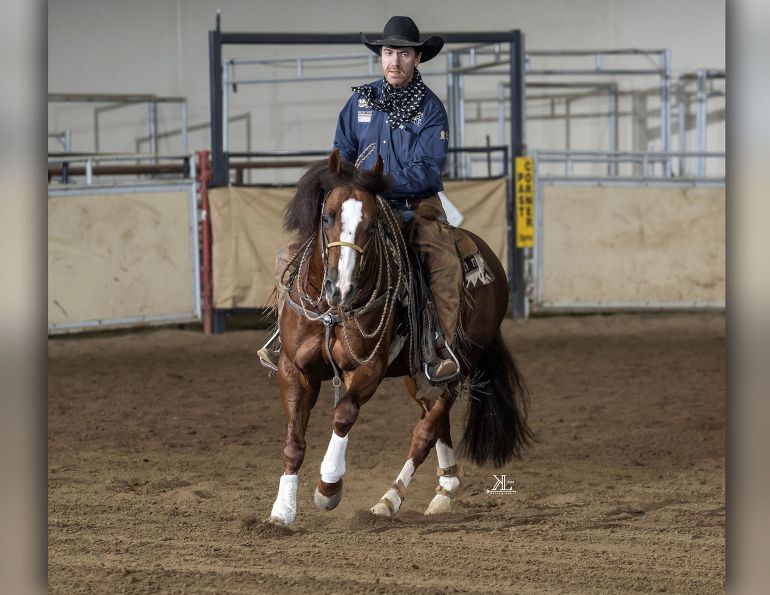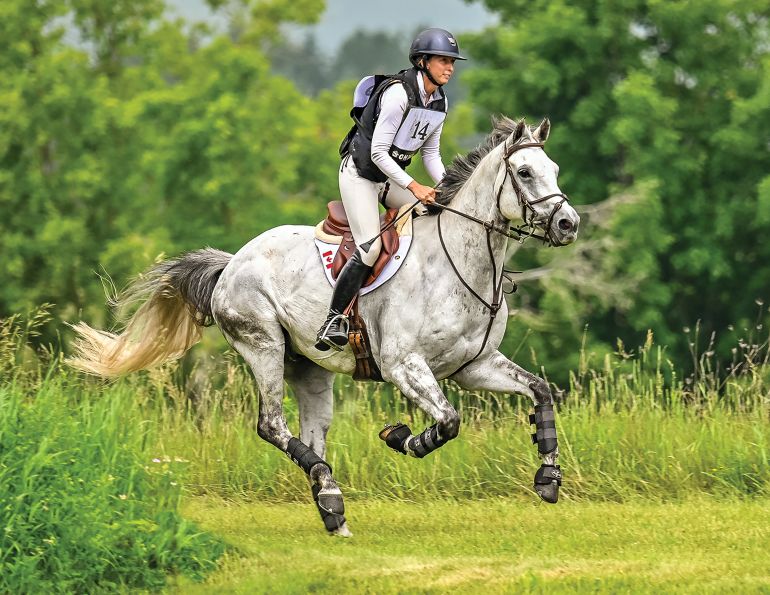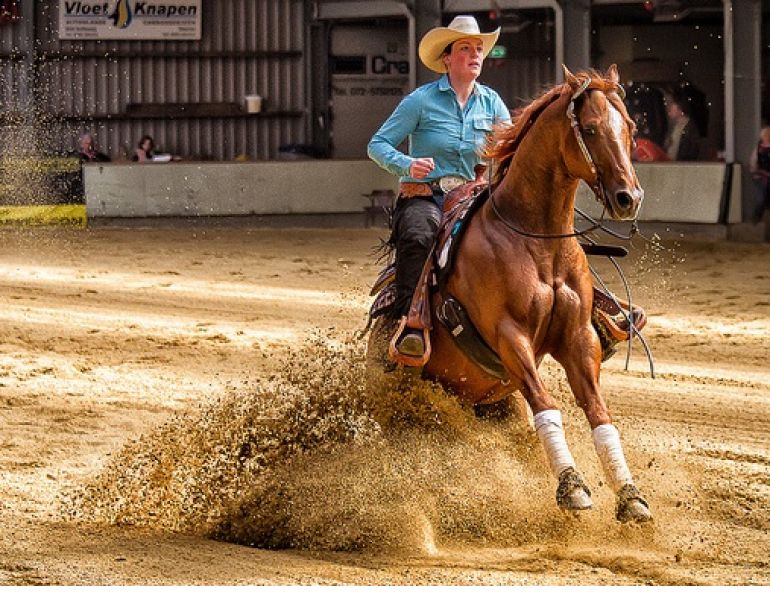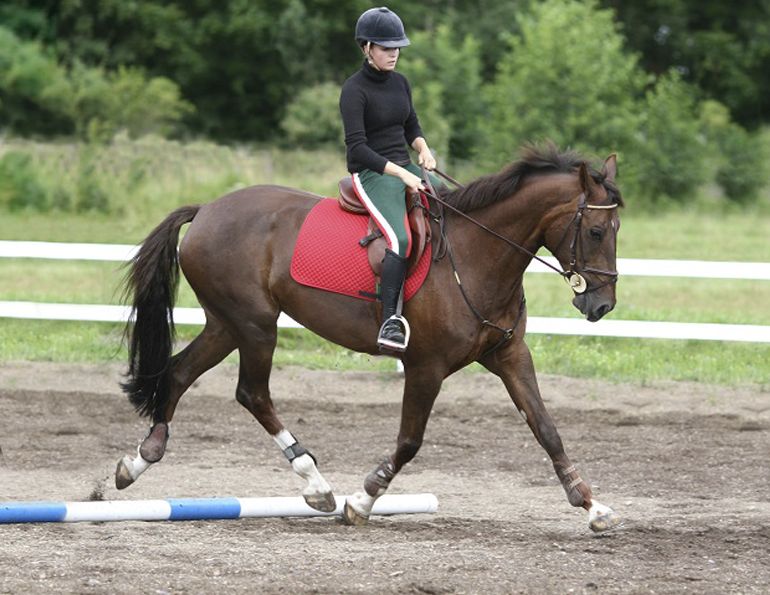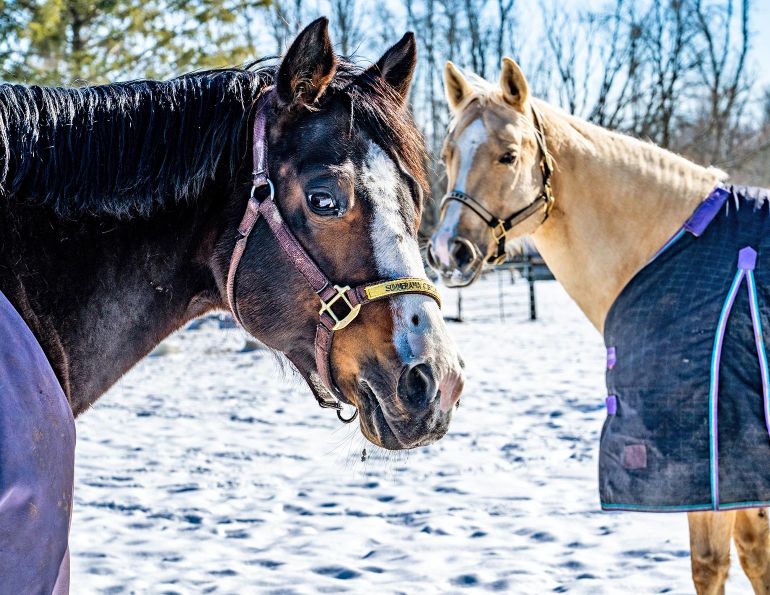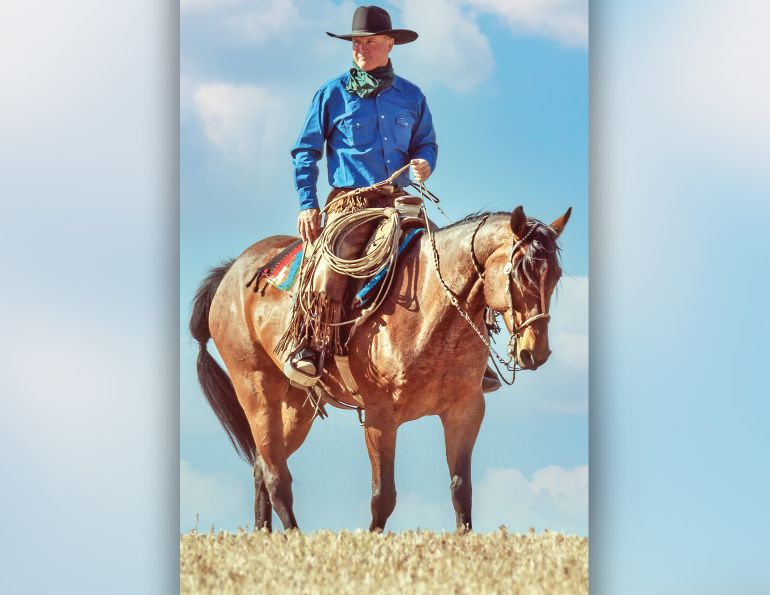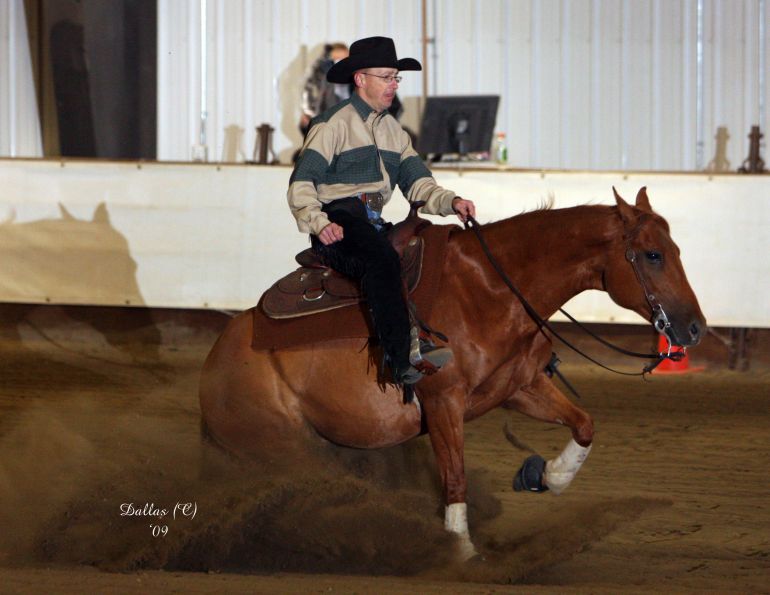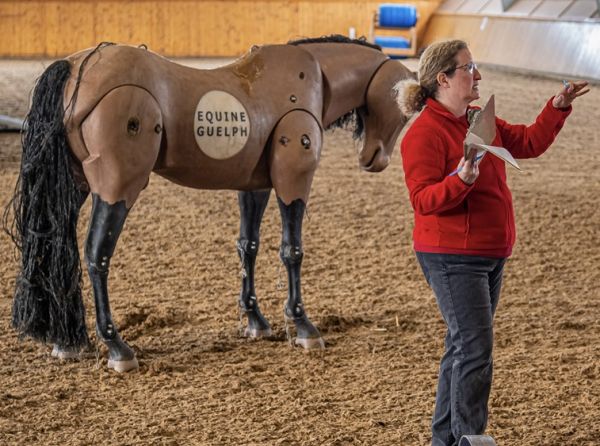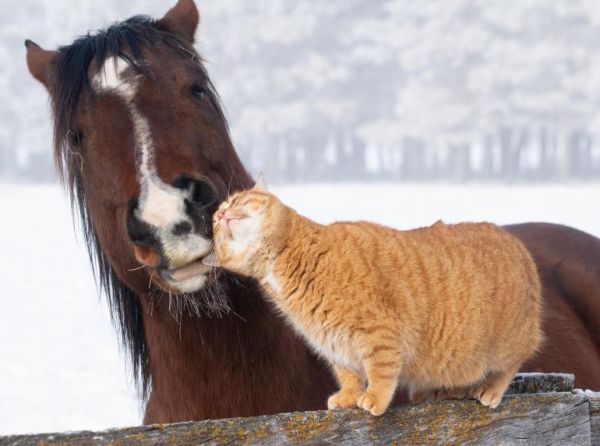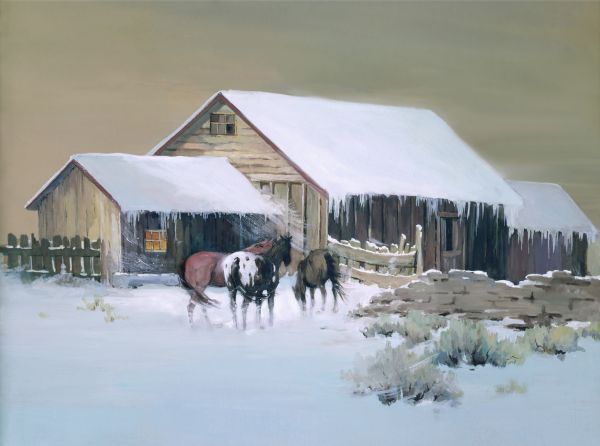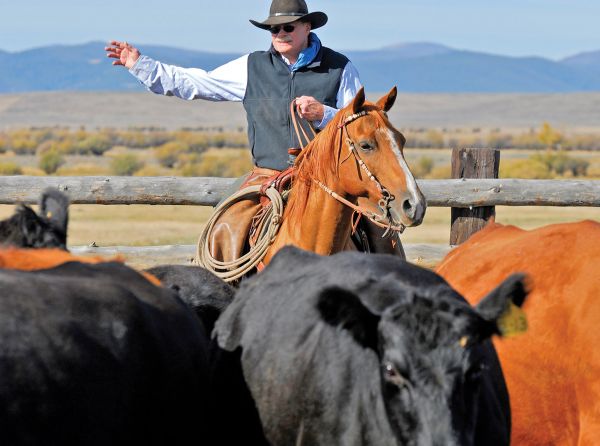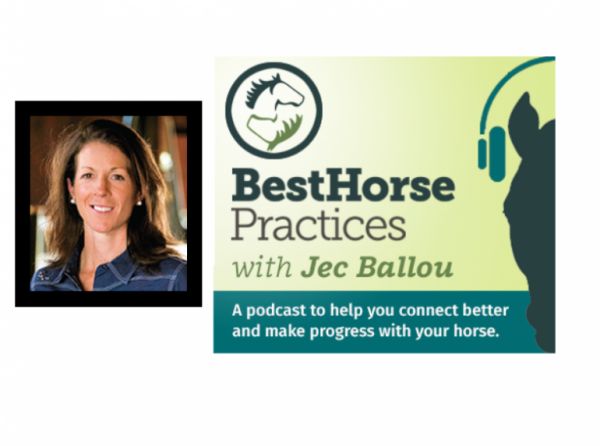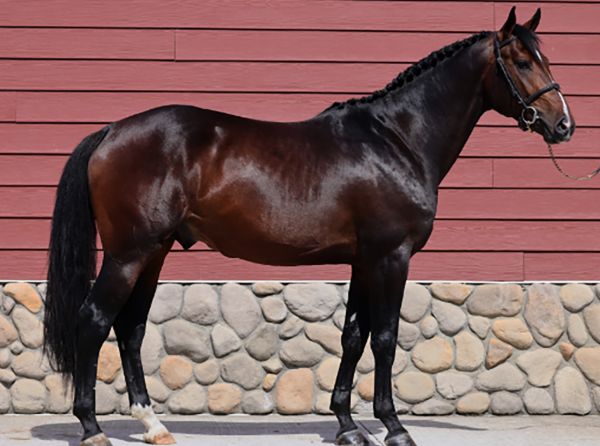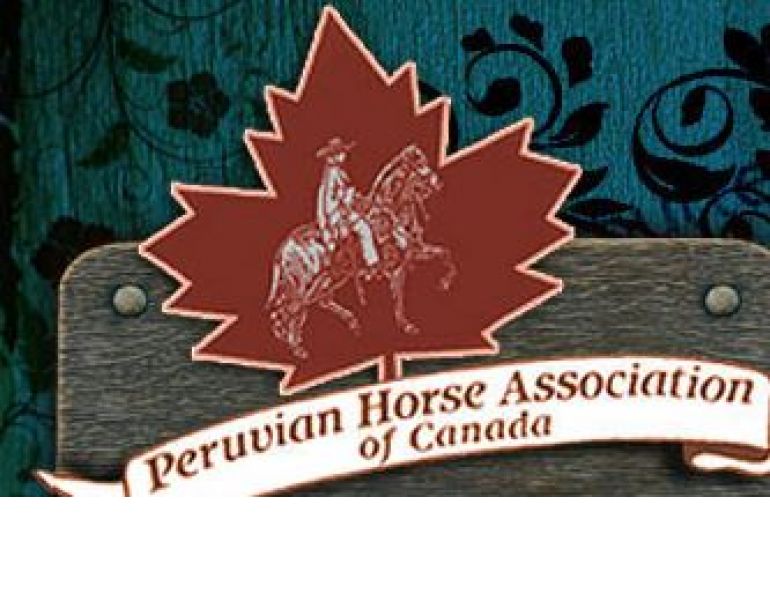With Lisa Coulter
Finding the Keys to Performance
The perspective expressed in this article is based on what I look for in a reining horse. There are many conformation points to consider, but I am focusing on a few key points that truly make a difference in the form-to-function of our reining horses. I cannot discuss some points as the view of the horses does not show angles that may be important in assessing leg structure. But straight legs are important for a reining horse and on a front view I would like to see them coming true and straight out of the joints.
Horse #1
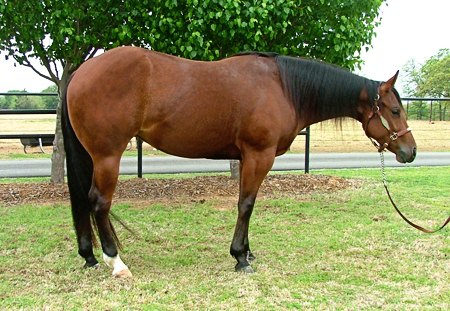
Horse #1 - Photo courtesy of Lisa Coulter
Horse #1, a high level reining show horse, is a nicely balanced horse. For me, balance comes from looking at the horse in three sections: the front end (including the head and neck), the midsection, and the hind end. There should be a balance between the slope of the shoulder, the slope of the hip, and the slope of the pasterns. If the neck is long then I like to see the hip have a long slope. This creates balance and a balanced horse travels more correctly, generally stays sounder, and handles maneuvers more easily as he is not fighting a balance issue.
This horse has a long, good-sloping hip that is proportional to his neck. His good hip allows for natural stopping ability. His neck ties in well to his chest and allows for a low head carriage which is desirable in reining horses. This horse will naturally carry his head level to or below his withers.
He is strong-boned with short, well-sloped pasterns. Reining horses should not have long bone length in their legs, as they need to be compact and strong. The spinning and stopping these horses endure makes strong bones and joints important. This horse has great joint size also, and he is slightly cow-hocked, which is desirable in reining horses. With a slight angle to the leg and hock tipping in, these horses are essentially born in the stopping position. Hocks turned slightly in also allow for clearance with their hooves in the sliding stops. We don’t want them so cow-hocked that the joints splay out, but you will commonly see cow-hocked reining horses and it is something I find acceptable. This horse also has a strong hind leg (gaskin muscle), which is a good start to sliding.
I don’t like that his withers are below his hip. This tends to set horses on their front end. Reining horses need to carry themselves with as little weight on their front end as possible. All the power needs to come from behind. If they naturally sit on their on their front ends, then they have to work that much harder to adjust the power back. This horse is also a bit long in the back for me. Power is critical and a longer back makes a horse weaker behind.
This horse has a pretty head, but perhaps his ears are a little long.
Horse #2
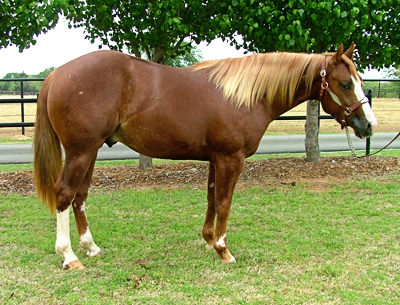
Horse #2 - Photo courtesy of Lisa Coulter
The second horse does not have exceptional balance, mostly because his neck is short and ties into his chest quite high. Because of this, he may carry his head high when ridden. In today’s top level reining competition, a horse running with his neck level is more desirable than a horse that carries his neck higher in the air.
This horse’s hip is set higher than his withers, which is one of my top conformation pet peeves. By comparison, a horse with a high-set withers is already in a natural position to stop, spin, and run with ease. Such a horse is built to be light on his front end and naturally collected with his hind end, which this horse is not.
On the positive side, this horse is short-coupled with a strong back. This strength carries on to his long, sloping hip.
His front cannon bones are short, which contributes to strength and soundness, but he does not appear to have much set to his hock as his hind cannon bones appear nearly perpendicular to the ground. I like to see some angle to the bone because straight back legs are harder to put in a stopping position. Straight hind legs also do not usually stand up to hard stopping and soundness may become an issue.
This horse is very pretty, with flashy colouring and markings, and he has a pretty head. Reiners like “pretty” as much as riders in other disciplines, as it adds to the overall appeal of the horse in the show pen.
Horse #3
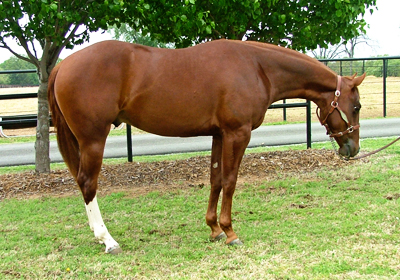
Horse #3 - Photo courtesy of Lisa Coulter
Horse #3 is long and lanky, especially when compared to the first two horses. I like that his withers are set even with his hip. At first glance he appears to have a long back, but notice that his withers ties in deeply to his back, indicating that his back is really not that long and he should have strength to his topline.
This horse’s hip is steep, which does allow for deep stops, but I prefer that the hip not be this steep. A steep hip usually coincides with a short hip, and though a short hip might allow for strong stops, a longer and more sloping hip sets a horse up for hard stops of longer distances.
Our third horse has a good set to his hocks; however, he has some excessive length to his cannon bones that I don’t like to see. His pasterns are also too long, which makes them more vulnerable to stress-related unsoundness. This horse is also small-boned.
He has an unusually long head; a shorter distance from eye to muzzle would make him prettier, in my opinion. He won’t steal any points for being fancy, but that would never stop me from riding or purchasing this horse. Reining riders may like pretty, but we have to remember that pretty is as pretty does, especially when looking at reining prospects.
Horse #4
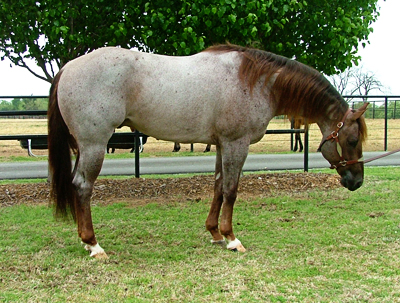
This horse has the best topline of any of the horses evaluated thus far. He is higher in the withers than the hip and looks agile. The topline is the first thing my eye goes to on a horse because a strong topline is the foundation for strength and ability, but you must consider that most stock-type reining horses will not fully develop a topline until they are past the age of three. Horses younger than three years will continue to go up and down in their withers and hip as they grow. You may not see their true topline until they are mature, so I can never fully evaluate a horse’s topline as a young prospect.
Our fourth horse has a beautiful long, graceful neck that ties in well. He also has massive joints and big bones, though his pasterns are long. His hocks appear to set out but this could be due to the angle of the picture. He also has a short, steep hip.
This horse is not as muscled in his gaskin and shoulder as the previous three horses. All degrees of muscling are found in reining horses and I really have little preference between well- or slight-muscled horses. Sometimes a thick, well-muscled horse can be cumbersome, having the necessary strength but lacking the grace. Slight-muscled horses generally are lankier and therefore lack some strength because of being long-coupled. If a horse is so muscle-bound in his chest and shoulders that he has trouble turning, I consider that. If he is so slight in his hip, gaskin, and/or loin muscling that he lacks the strength to stop, I consider that as well. Generally speaking, I like a horse to be medium-muscled with balance being the most important characteristic.
This horse’s head is pretty and his colouring gives him a flashy look.
Lisa Coulter of Princeton, BC, is one of the leading reiners in Canada and the world with a list of achievements that include an individual silver medal at the 2009 FEI Kentucky Reining Cup, multiple NRHA championships, and the prestigious title of 2010 FEI World Ranking Rider. Currently based in Pilot Point, Texas, Lisa continues to represent Canada in international competition and is dedicated to developing the sport of reining within Canada.
This article was reprinted with kind permission from Kentucky Equine Research.
This article originally appeared in the November 2013 issue of Canadian Horse Journal.
Main article photo: Dreamstime/Galantnie



